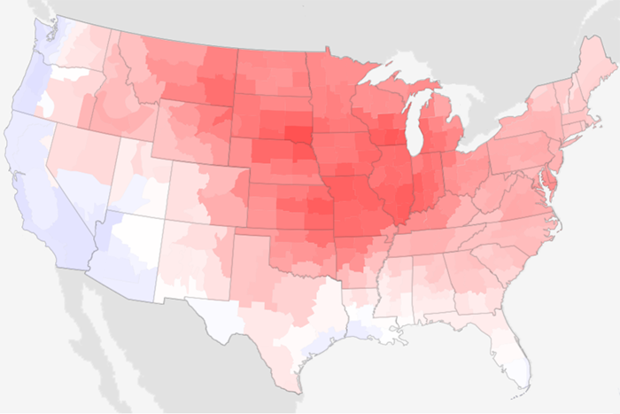Modeling study successfully simulates extreme heat in Missouri

In this temperature anomaly map from July 2012, below-average temperatures are blue and above-average temperatures are red. Unusually high temperatures dominate Missouri. Credit: NOAA Climate.gov
Record-breaking high temperatures persisted across the US Midwest in July 2012, including in Missouri, which contains critical productive farmland. Heat waves have far-reaching impacts on human and ecosystem health, and operational models have failed to predict these events accurately. A recent study, funded in part by the Climate Program Office’s Climate Variability & Predictability (CVP) Program successfully simulated the extreme Missouri heat wave over space and time. CVP-funded researcher Tim Li (University of Hawaiʻi at Mānoa) alongside researchers from Nanjing University of Information Science and Technology and the University of Missouri-Kansas City used a high-resolution Weather Research and Forecasting (WRF) model to produce a pattern of air temperature which is comparable to in-situ observations.
Read more at the link below.